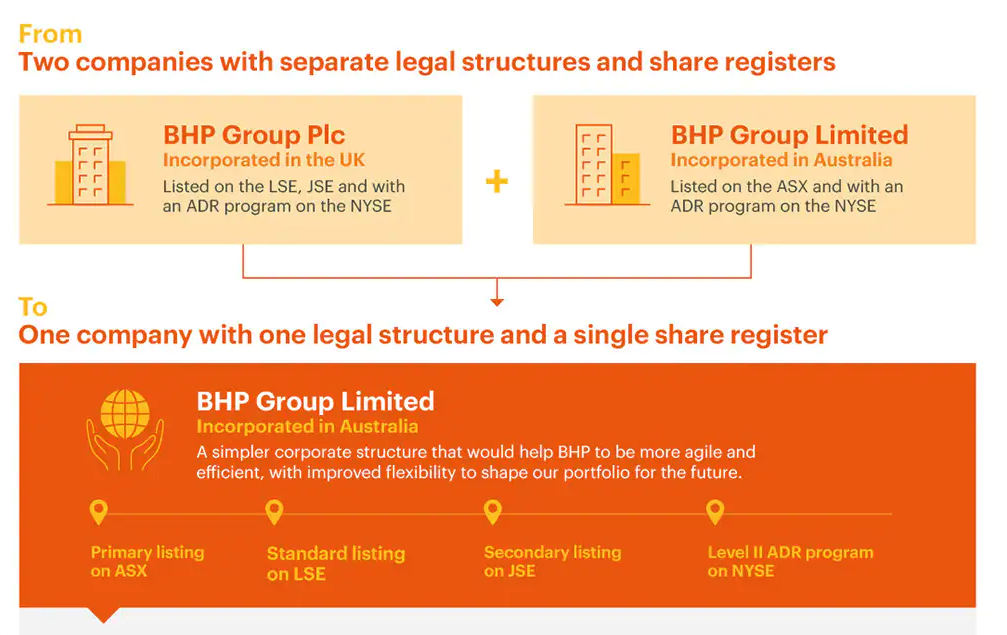With the reunification of BHP Group Ltd (ASX: BHP) now completed, investors are likely scratching their heads thinking what was all the fuss about?
This guide will explain the reunification process, how it impacts your shareholding and what it means for the market.
BHP reunifies
Prior to reunification, BHP had a dual-listed company structure:
- BHP Group Limited, traded on the Australian Stock Exchange (ASX)
- BHP Group Plc, traded on the London Stock Exchange (LSE)
The dual structure originates from the merger between Australia’s Broken Hill Proprietary (BHP) and London-based Billiton back in 2001.
Each company (Limited and Plc), owned 50% of the mining conglomerate.

Under reunification, one Limited share will be issued for every one Plc share.
It’s a one-for-one trade, to retire the legacy Plc shares and bring all BHP shares under the Australian listing.
Why choose to unify?
Unification allows for simplicity.
For example, BHP will no longer need to hold two shareholder meetings or have two separate boards.
Additionally, the company can raise money more efficiently rather than across two time zones, regulatory bodies and share exchanges.
Finally, the UK-listed BHP shares have historically traded at a marginal discount to Australia-listed shares.
Reunification will close this gap and remove arbitrage opportunities.
The main disadvantage of unification is the upfront cost of US$350 million and US$450 million.
It will also mean BHP is no longer a part of UK Indexes and create potential tax consequences for Plc shareholders.
When is reunification completed?
Reunification was completed on Monday, January 31.
ASX shares are unchanged. However UK-listed shares now trade as Limited Depositary Interests.
There is no impact on ASX-listed BHP shareholders.
You can still buy and sell BHP shares as per normal.
Nor is there any impact on the underlying BHP business.
Its management, assets and operations all remain unchanged.
Effect on indexes and ETFs
Due to BHP transferring shares to the ASX, its market capitalisation (the number of shares multiplied by share price) increased to approximately $234 billion.
Subsequently, BHP’s weighting side indexes and exchange-traded funds has increased.
The company now represents about 10% of the S&P/ASX 200 (ASX: XJO), up from 6%.
It is now the largest company, measured by market capitalisation, on the ASX.
The increase in BHP comes at the expense of allocation to other big names such as CSL Limited (ASX: CSL) and Commonwealth Bank of Australia (ASX: CBA).
Final thoughts
For the majority of BHP shareholders, reunification will have no effect.
But for ETF and index investors, it’s worth keeping in mind the increased weighting of BHP in dictating performance.
If you’re buying an ASX 200 ETF, $100 in every $1,000 will be invested in the mining conglomerate.
If you enjoyed this guide, consider signing up for a free Rask account and accessing our full ETF reports and stock ideas.





